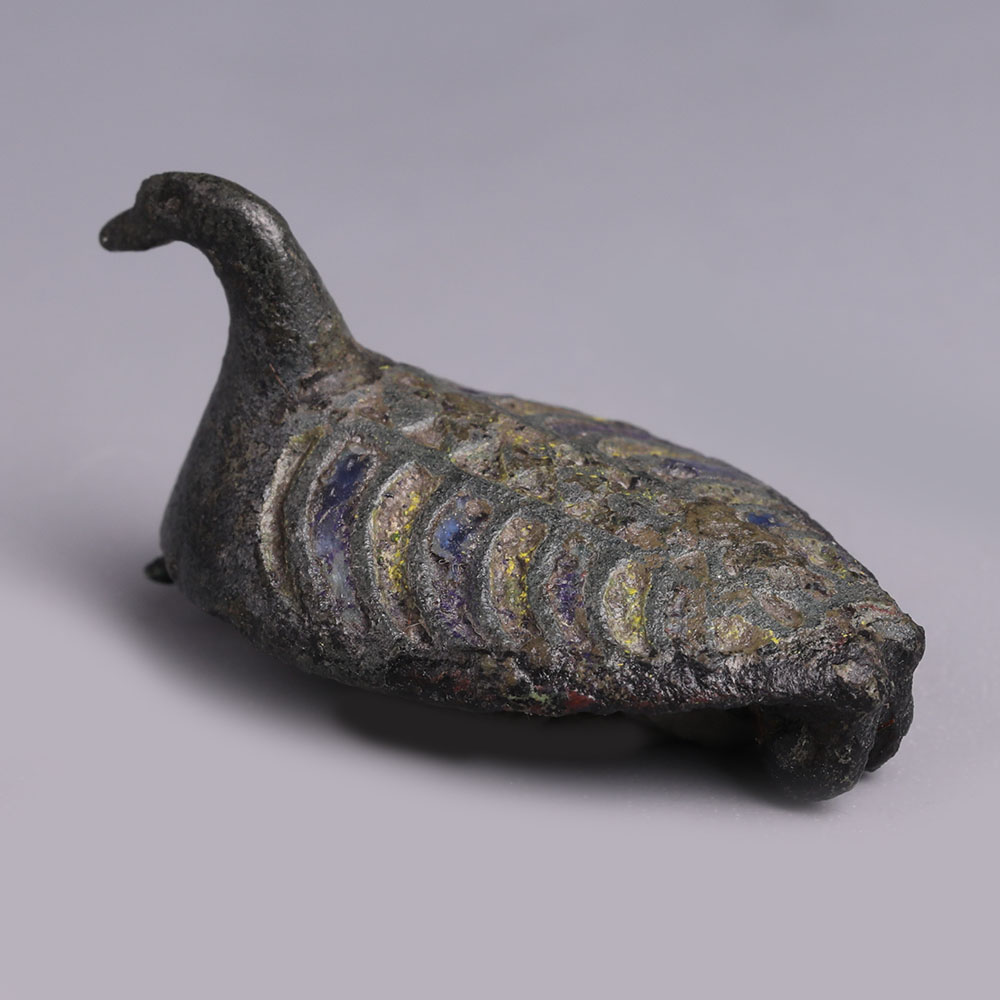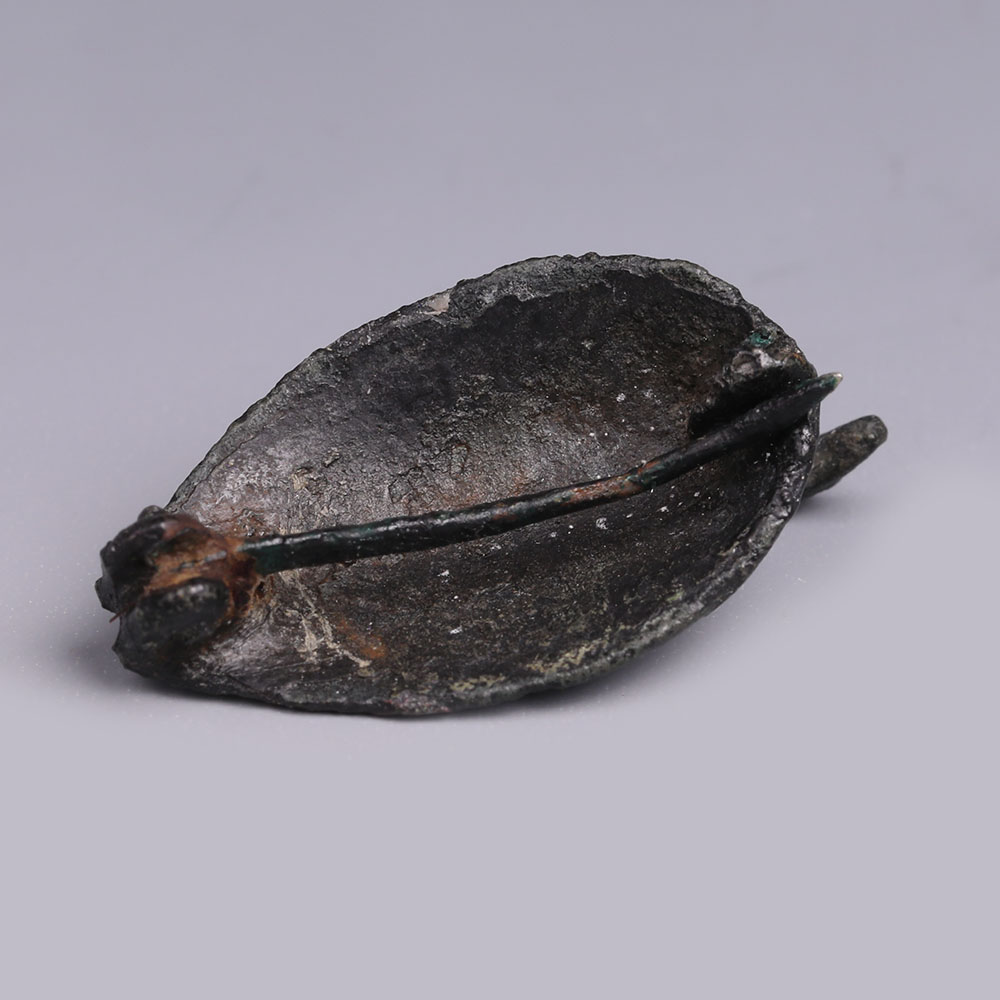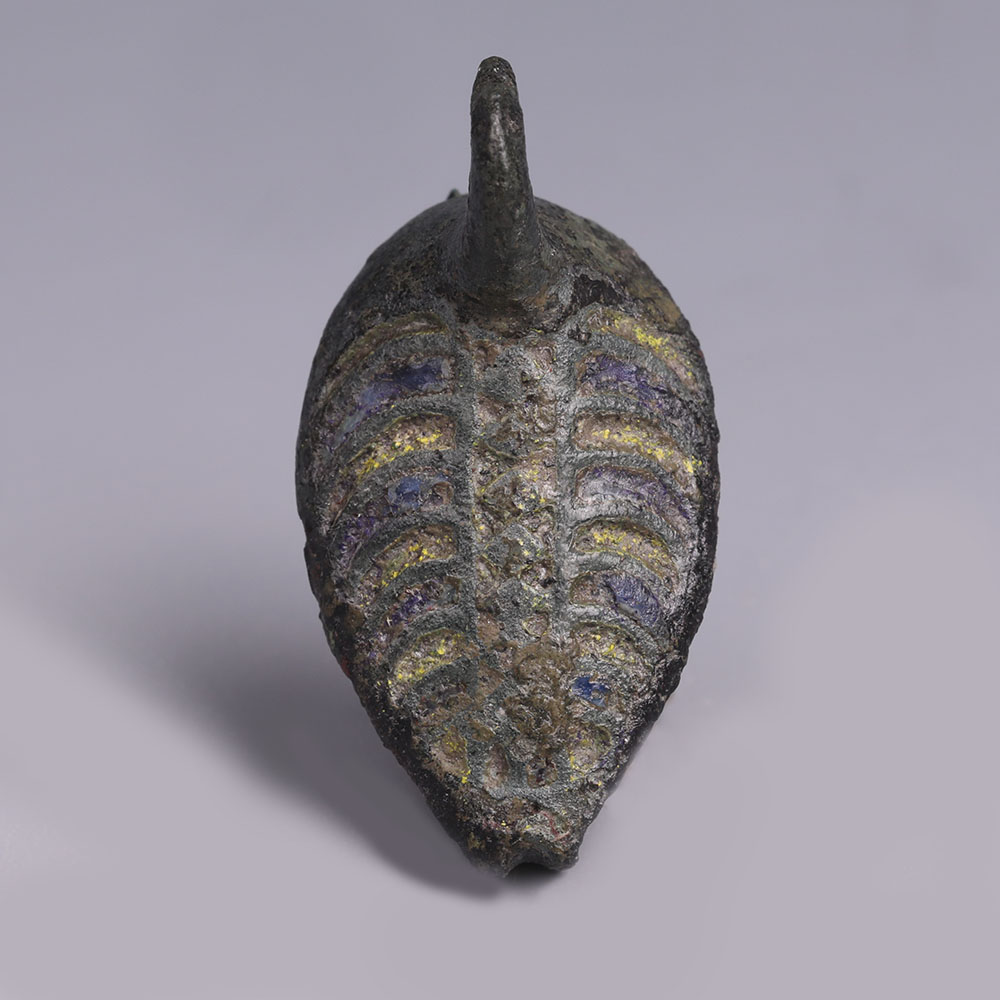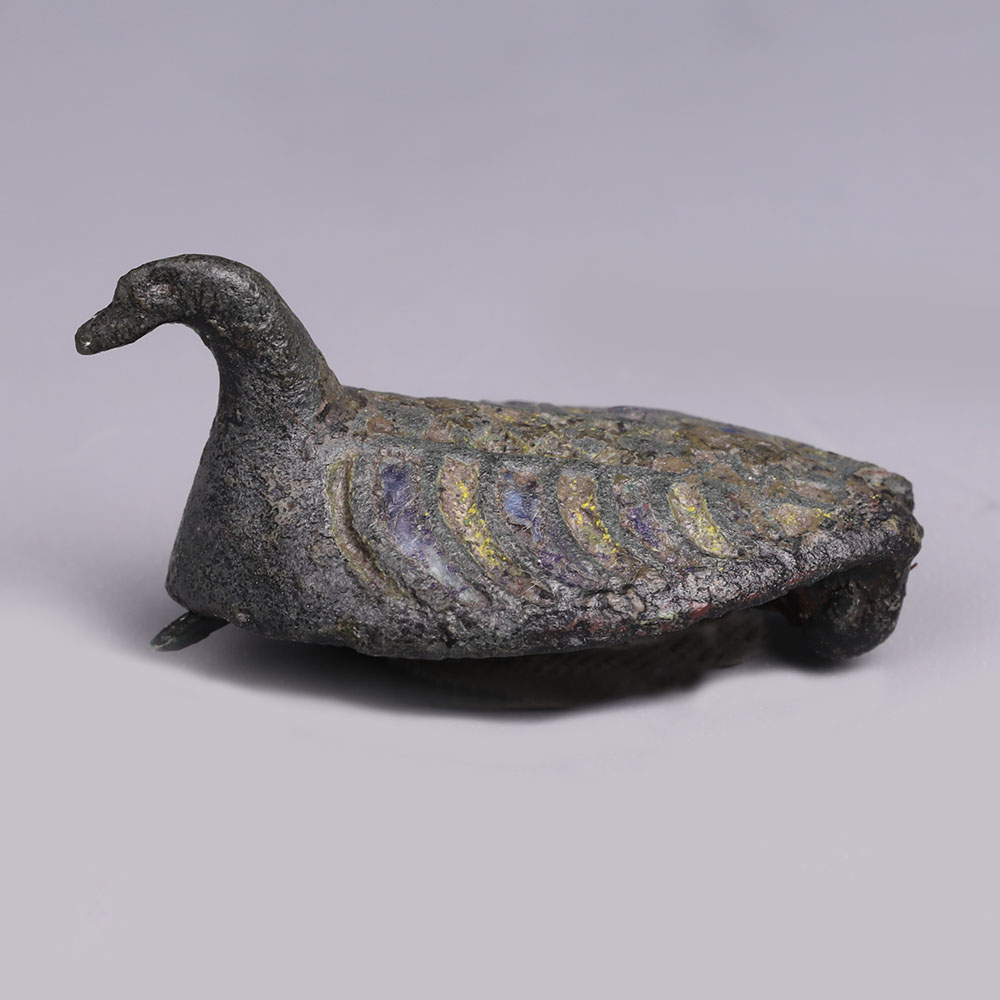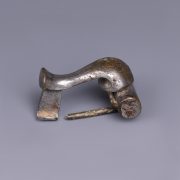In the cultures of ancient Greece and Rome, fibulae (or brooches) were originally used for fastening garments. They came in a variety of shapes, but all were based on the safety pin principle. The Etruscans were very fond of fibulae, some of which were very large and decorated with elaborate granulation and processions of animals in relief. Roman conquests spread the use of the fibula, which became the basis for more complicated brooches. By the Middle Ages, the Roman safety pin type of fibula had fallen into disuse.
Birds were a common decorative theme across the Roman Empire and were especially popular as a fibula design. Amongst the repertoire of zoomorphic brooches, birds and mammals are by far the largest group. Amongst this, swimming birds, such as this example are also common.
